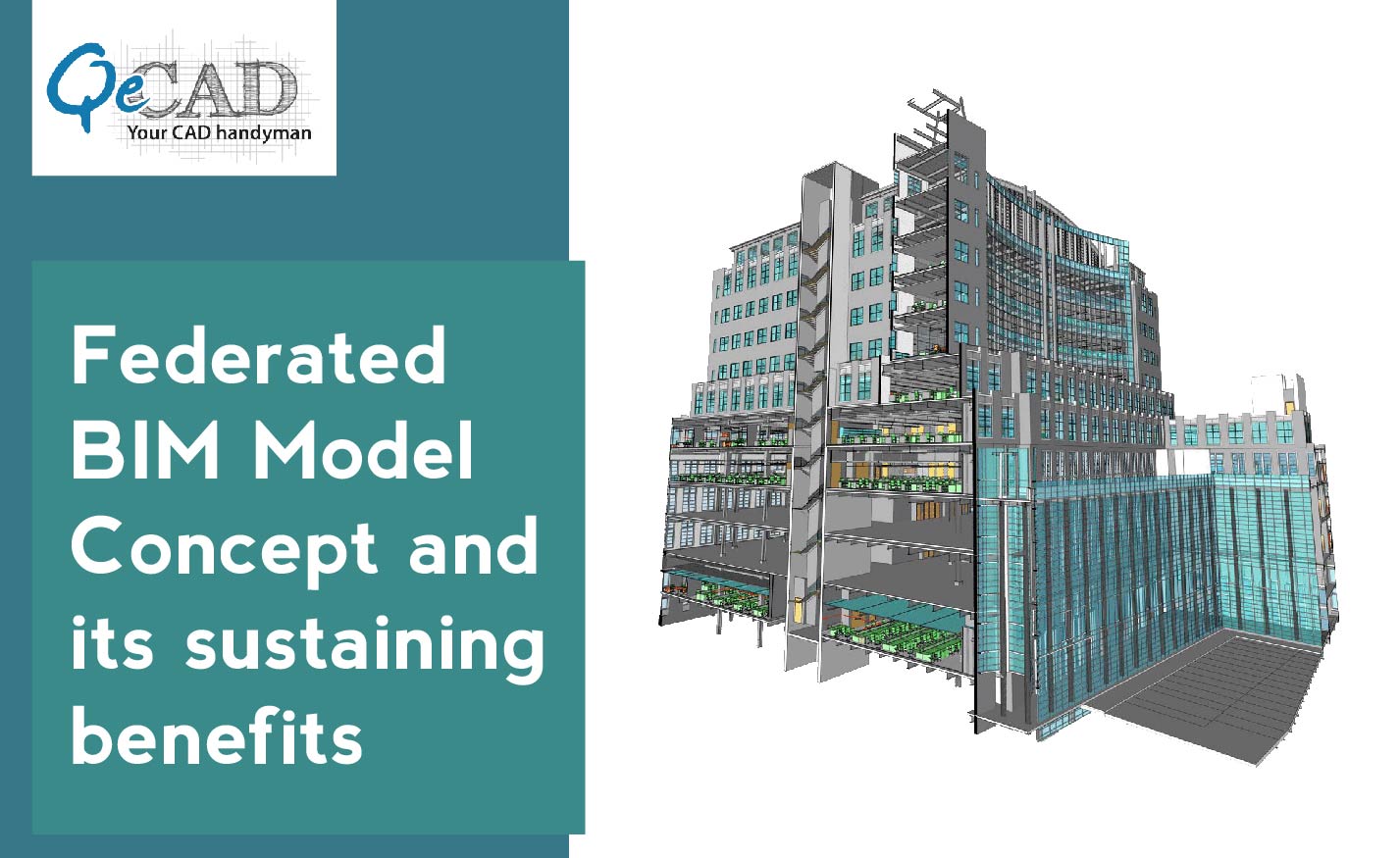
Introduction
A Federated BIM Model is indeed a collegial method for developing building information modeling wherein the numerous construction project participants contribute or supply their own BIM models in order to start creating a complete and integrated visualization that encompasses the whole building or infrastructural facilities. Let us begin the discussion by indulging more into the concept of the Federated BIM Model as well as its associated benefits.
More about Federated BIM Model and its associated perks
Every party generates its own BIM model in something like a Federated BIM Model, which also encompasses extensive data regarding the composition of the construction, also including Architectural Drawings, construction methods, mechanical as well as electrical components, and so on. Individual models are subsequently combined into a single, consistent system that illustrates how the project’s elements interact with one another.
In addition to this, developing a Federated BIM Model necessitates comprehensive cooperation and collaboration among all people concerned, including designers, engineering technicians, construction companies, and contractors. It thus guarantees that the finished model correctly represents the whole endeavor and reduces the possibility of discrepancies or confusion through building projects.
A federated model is described as “a consolidated Building Information Modeling constructed or assembled by conflating numerous distinct types within one or integrating one design into the next” by NBS i.e., National Building Specification This then combines a few key elements from various fields together into a single information context, enabling access to one another and combining the documentation.
Every field has been in charge of the establishment, advancement, and continual improvement according to its own design concept, which results in a truly collaborative working approach. According to the CIC BIM Guidelines, a business must presumably have quite an information executive tasked with being in charge of managing the federated model. This person’s responsibilities include adhering to BIM protocol as well as the pertinent processes.
Federated Building Information Modeling (BIM) seems to be a technique that entails the fusion of numerous BIM models produced by various project partners. The following are just some benefits associated with employing a shared BIM model:
- Improved Collaboration:
By offering a singular, approachable authoritative resource, federated BIM enables various parties involved to collaborate cooperatively on an endeavor. As a result, there are fewer mistakes and disruptions due to improved stakeholder collaboration and interaction. - Leading To more accuracy:
This same federated model offers a more precise depiction of the endeavor by combining different BIM models, finding and addressing possible problems before they affect the design. It thus lowers the possibility of mistakes and guarantees a more efficient building approach. - Potential savings:
By recognizing possible problems prior to actual building starts and preventing the requirement of expensive revisions all through construction, federated BIM models could indeed assist with lowering construction costs. - Time savings:
Federated BIM models could even assist in reducing building time as well as expenses by recognizing and fixing possible problems before they become problems at an early stage of the design and also enhances the delivery of the projects. - Enhanced Security:
Federated BIM models could still assist in identifying possible security threats in advance of the beginning of building projects, lowering the risk of mishaps mostly on construction sites. - Greater Sustainability and Durability:
Federated BIM models could indeed contribute to greater sustainability of building projects besides facilitating further precise conceptualization and construction, which reduces waste as well as increases energy effectiveness.
On the whole, federated BIM models for construction works provide important benefits by enhancing collaboration, precision, as well as effectiveness, whilst also lowering hazards and incurring expenses. Additionally, it gives the BIM group participants sufficient assets to deliver high aesthetic collaboration, more accuracy, potential savings, design development, regulatory approvals, budgeting, and other offerings. As a result, it promotes greater utilization of resources, lessens conflicts, lowers lawsuits, as well as facilitates decision-making.
There are some practical difficulties that go along with such advantages. Such difficulties entail developing proactive change as well as revision monitoring methods, constructing and assessing amended internal audits, and so forth. Given the greater benefits of federated BIM models, these limitations may be readily surmounted.
Conclusion
The overall discussion of this blog reveals that Federated BIM Models have become increasingly popular in the construction sector because they provide substantial advantages like better information exchange, productivity improvements, and lower budget estimates. They facilitate all construction specialists to function or work together in a more integrated and coherent sense, resulting in a better final outcome for consumers as well as other stakeholders.
In the end, federated BIM improves project administration by enabling interested parties to effortlessly exchange information about the construction system or just a subset of it in accordance with project specifications.
